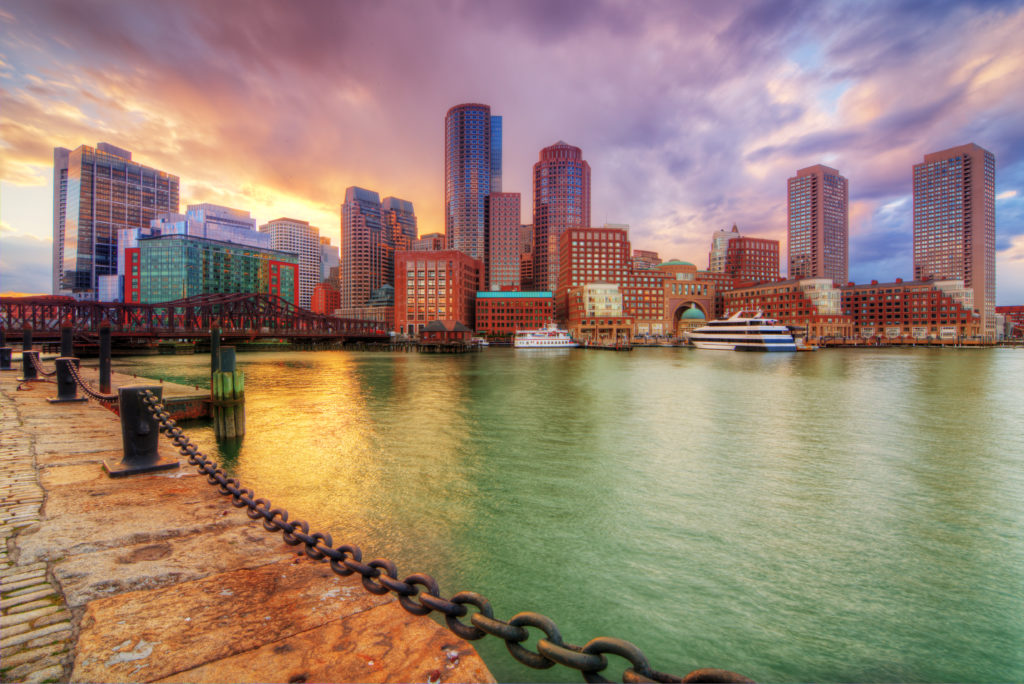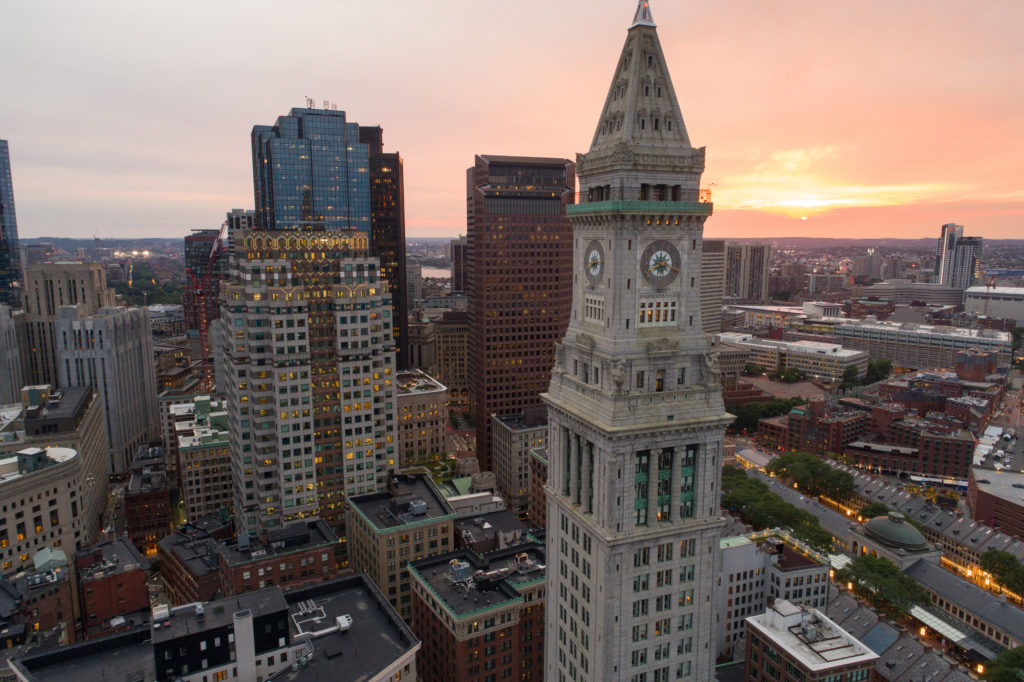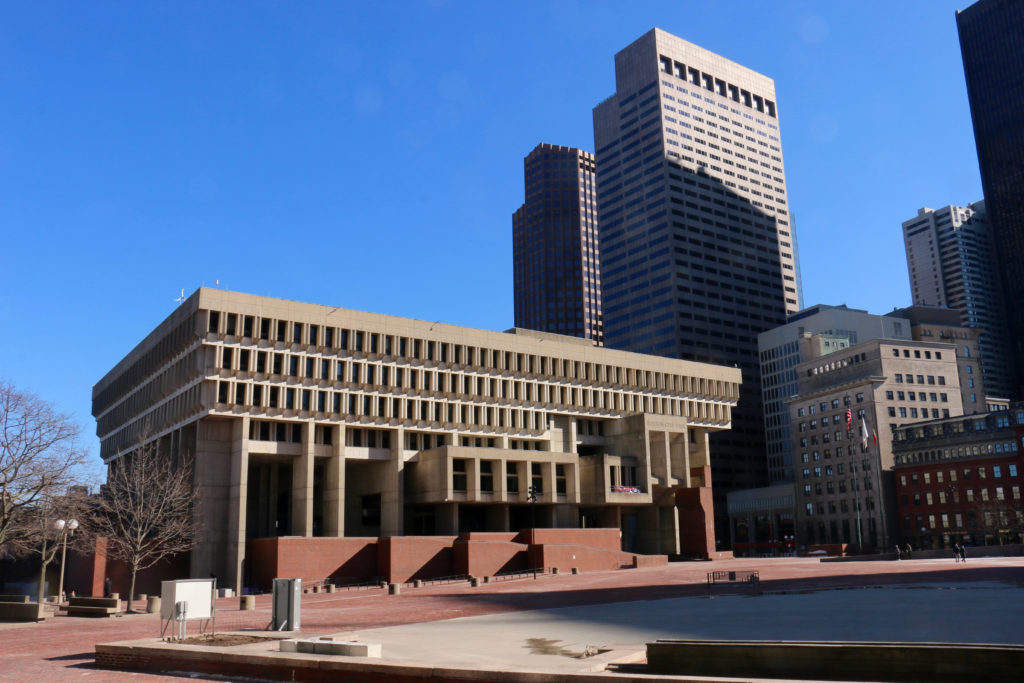
Founded in 1630 by Puritans seeking religious asylum, Boston is one of the oldest cities in the United States. Its long and storied history includes a pivotal role in the American Revolution, and one of the most iconic events leading up to that conflict: the Boston Tea Party. As America grew and expanded as a country, so did the city of Boston. Today, Boston is a cosmopolitan center of commerce, technology, and medicine. Over 4 million people live in the greater Boston area.
You’re passively taking in centuries upon centuries of history, simply by taking a walk along the streets of Boston! If you’re a Bostonian, or looking to settle down in the city known as Beantown, the beautiful, historic architecture is one of the more prevalent appeals of this iconic city. This blog will take a look at a couple of Boston’s most storied, beautiful buildings.
Custom House Tower

Boston’s original skyscraper, the Custom House Tower, was originally not intended to be a skyscraper at all! Initially dubbed the U.S. Custom House, the building (sans tower) was completed in 1847, sporting Roman columns around the exterior and composed mostly of granite. The original building’s most striking aspects lay on the inside, as opposed to the outside. A rotunda, or circular ground room, greeted visitors inside, finished with white marble. Looking up revealed a skylit dome, likely to the delight of many historic visitors.
Unfortunately, the building was rendered obsolete by the 20th century. The Custom House needed a face lift to regain traction, and it received much more due to a number of fortuitous circumstances. The famous architects at Peabody & Sterns proposed constructing a new clock tower, on top of the existing building. This would not have been possible due to zoning laws at the time, but the House was owned by the federal government, which meant that it could bypass zoning laws that restricted buildings from rising above 125 feet.
The new tower ended up bypassing this restriction by an egregious amount; by the time Peabody & Sterns finished construction in 1915, the Custom House Tower – as it was now called – it stood an impressive 495 feet tall! The tower was by far the tallest building among the Boston skyline for almost 50 years, when the Prudential Tower was finished.
With this beautiful new addition, complete with an intricate clockwork system at the top, the building enjoyed usage from various federal groups. From 1986 until 1997, the tower was unused, standing alone as a beautiful, albeit seemingly obsolete, part of the Boston skyline. In 1997, it gained a new usage as a Marriott hotel and has remained there since.
City Hall

One of Boston’s most iconic buildings, Boston’s own City Hall doesn’t quite owe its popularity to aesthetically pleasing design and impressive use of color. In fact, City Hall is the subject of constant debate over its appearance, and whether its blocky, austere nature is a welcome addition to the city’s landscape, or a blemish on it.
City Hall is an example of Brutalist architecture, a style which originated in the 1950s. This style makes extensive use of poured concrete, which is visible in City Hall’s exterior as well as its interior. Completed in 1968, the building’s small windows and lack of curvature further contribute to its stiff, austere look. Compared to the classic beauty of Old City Hall, a building that still stands in Boston, the transition from the old building to the new one was met with shock and disdain from citizens and architects alike.
Coincidentally, “brutal” may be a term that comes to mind when you take in City Hall’s blocky shape, heavy use of straight lines, and overall rigid design, which extends all the way to the thin windows and columns. However, the term “brutalism” does not come from the word “brutal,” but rather from the French term “Béton brut,” which means “raw concrete.” This refers to the unfinished concrete that makes it onto the final design of a building. This is an essential part of City Hall’s design. Whether you think City Hall is beautiful or not, it’s undeniable that it stands as an important architectural monument, as well as serving a vital purpose to the city.
Conclusion
The city of Boston houses countless historical buildings, many of which are as beautiful to observe as they are to learn about and explore. This feeling of storied beauty extends to Boston’s housing market, which contains a bevy of old-fashioned and cutting-edge homes alike. If you’re on the market for a home in Boston, you’ll want an agent that can help you secure a property at a great price. Visit our website at visitamr.com to see how you can settle down in one of America’s most iconic cities!
Leave a Reply